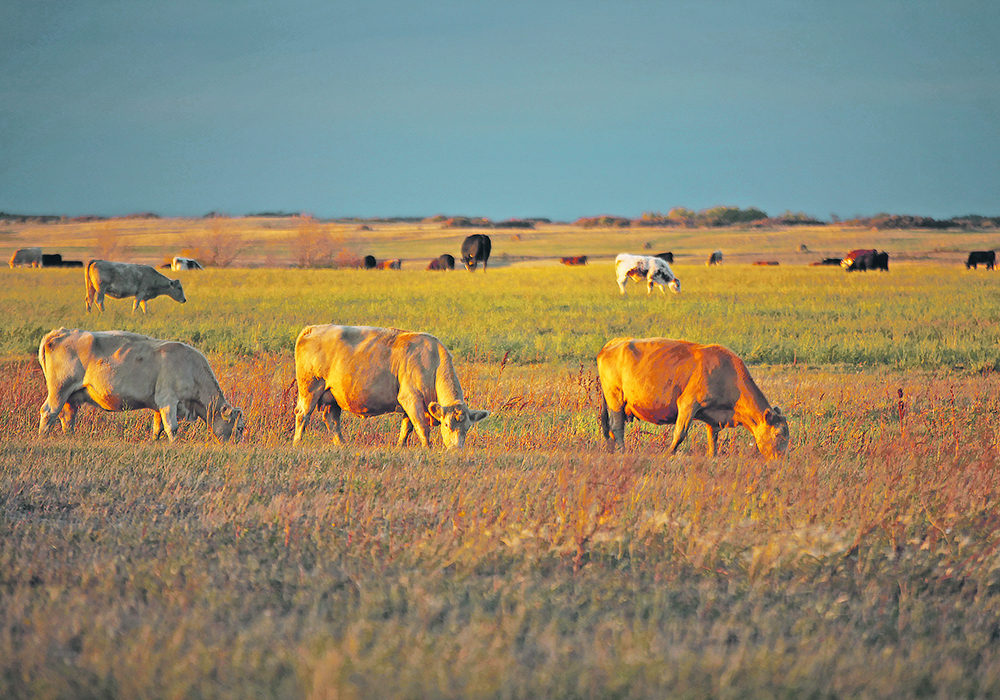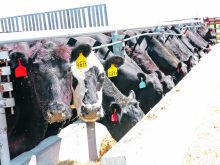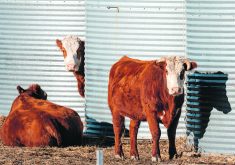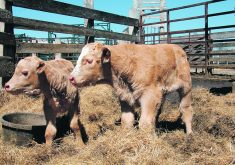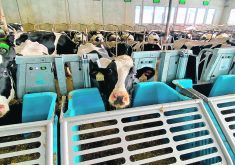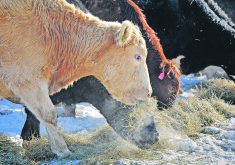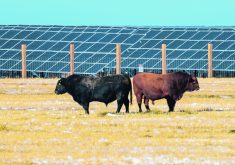Initial research found surprising links between cattle efficient at digesting fibre and methane emissions
Results of four interconnected studies on cattle forage intake and methane emissions have yielded useful findings, says a University of Saskatchewan researcher.
“Our hypothesis is that cattle with greater digestible fibre intake would have positive RFI (residual feed intake) because they eat more,” said Dr. Gabriel Ribeiro, an assistant professor and the Saskatchewan Beef Industry chair.
The first of those studies took place over 56 days. Cattle were fed a forage-based diet of 70 per cent silage and 30 per cent concentrate in Grow Safe bunks that measure feed intake and behaviour.
Read Also
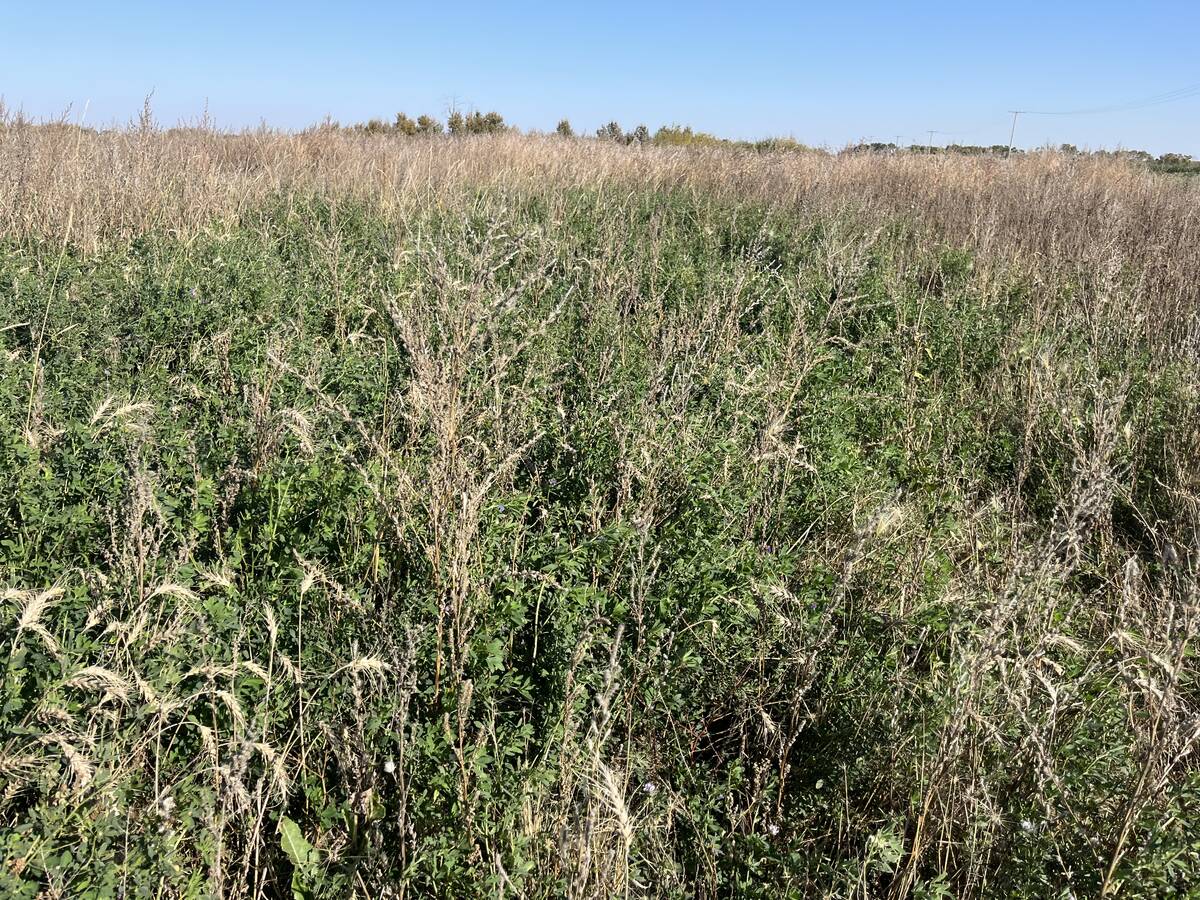
Dormant seeding forages frees up farmer time and gets ahead of weeds
Dormant seeding isn’t common practice and can appear daunting, but there are some techniques to give Manitoba farmers an edge
Study two measured methane emissions of the cattle. Animals in this study were fed the same diet but were housed in one feedlot pen.
The third study took place over two blocks of 49 days. The heifers were divided into two treatment groups; one with a high amount of digestible neutral detergent fibre, a common measurement of fibre in animal feed analysis. The other had low NDF. The heifers were housed in individual stalls.
The fourth study used the same 16 heifers. However, they were fed four different diets: 100 per cent grass hay, 100 per cent alfalfa hay, 90 per cent barley grain with 10 per cent alfalfa hay, and 90 per cent barley grain with 10 per cent grass hay.
“The main objective was to try to understand what physiological parameters and what traits in cattle are making them better at eating and digesting that fibre,” said Ribeiro.
“And then based on that, we wanted to see if we could select for that and after selecting for that, try to understand what makes them better.”
The research started two years ago and is now wrapping up.
Ribeiro says it began by choosing recently weaned heifers. Researchers monitored the heifers’ eating habits, assisted by the GrowSafe feed bunks that measure type and amount of feed.
They weighed the heifers every week and took fecal samples to monitor fibre digestion. Researchers then compared the top eight and the bottom eight animals.
“We did a bunch of studies looking at how they digested the fibre, also the feeding behaviour. We looked at the weight gains. We looked at methane production. So, we looked at a lot of parameters to try to really understand what makes them so different,” said Ribeiro.
Methane mapping was done using used technology called a GreenFeed system, which measures emissions of methane and other gases, with the goal of investigating the relationship between fibre digestibility and methane emissions.
“Environmental sustainability has become more and more important,” he said. “The government is interested in finding solutions so we can reduce the impact of livestock on the environment. So, we added a portion of this work, one of the objectives, to look at if there is any difference on methane production.”
Ribeiro said the fibre digestibility results are the most exciting parts of the research. It found that animals that were more efficient at digesting fibre ate the fastest and spent more time ruminating.
The results are expected to help producers select more efficient cattle.
“By selecting those heifers that can eat and digest fibre more efficiently, we think there’s an opportunity to reduce the cost of production and profitability,” he said. “So I think for the producer itself, that’s super important.”
Selecting for more efficient cattle could allow animals to perform well even with lower feed quality.
“I think having animals that are more adapted to the environment and animals that can use better, lower-quality forages and fibre, that has a huge benefit, not just to the beef producer, but to the environment as a whole,” Ribeiro said.
The study revealed that animals more efficient at digesting fibre also produced less methane.
“It was a bit surprising because usually, the more fibre you digest and you break down, you should have more methane production associated with that. But we didn’t see that, we saw the opposite.
“I think it gave us a little bit more energy to continue to pursue this line of research, because we think is quite valuable.”
Ribeiro and his team have been compiling data and are in the process of getting it published.
“It was a first study with a smaller number of animals. We want to take it larger, generate more phenotypes so we can go deeper into the genetic markers associated with that improved ability to eat and digest fibre.”


